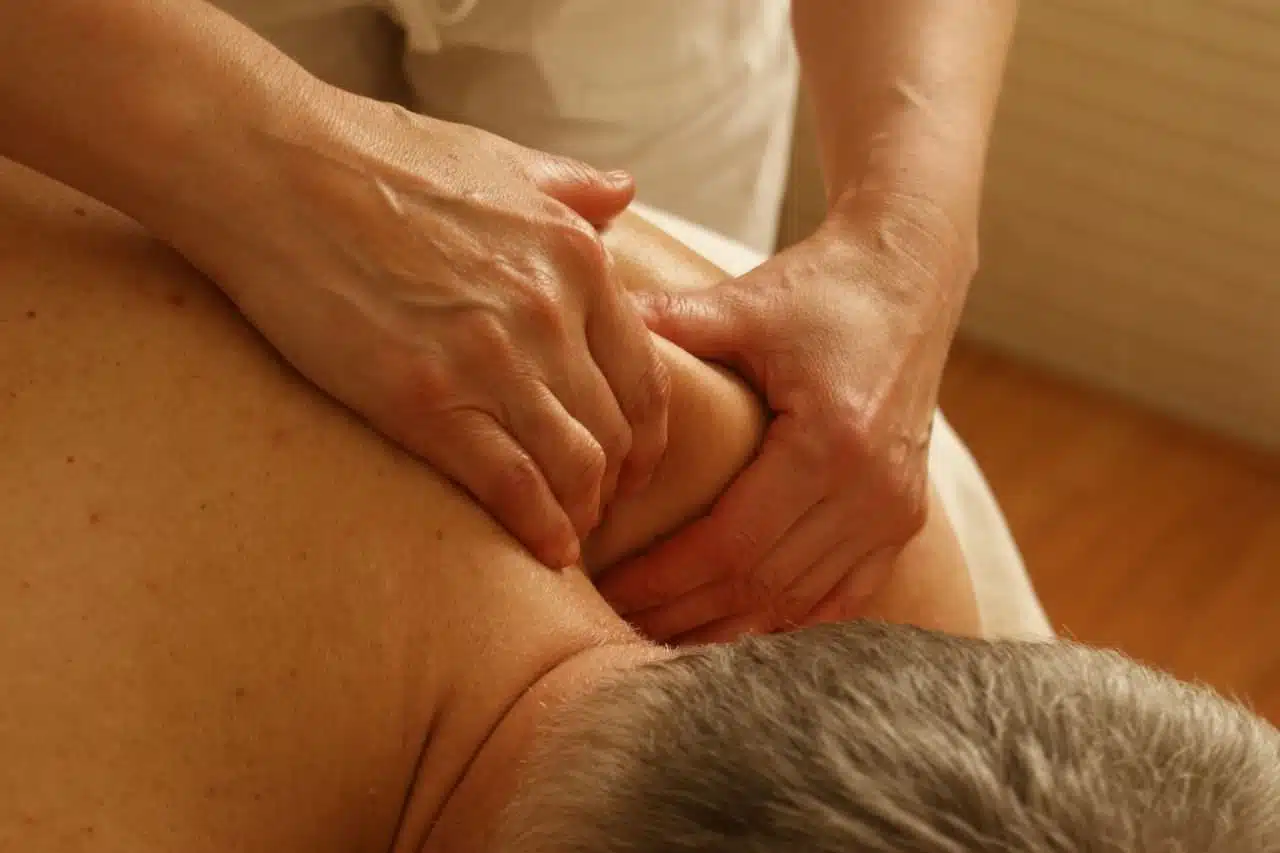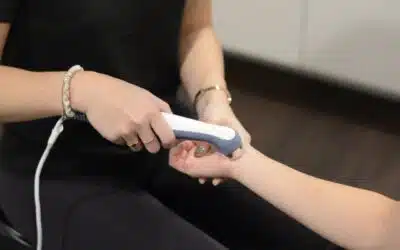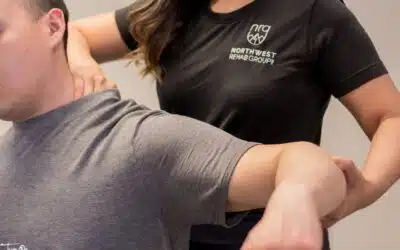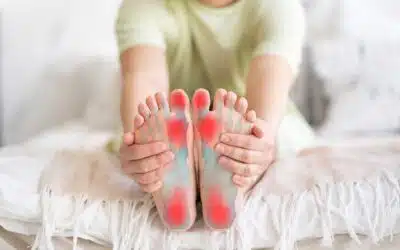Adhesive Capsulitis is a chronic inflammatory response to an injury or disease that can affect the shoulder, elbow or hand. In Adhesive Capsulitis, tissue beyond the skin becomes inflamed and then scarred, resulting in pain, decreased range of motion and deformity. The inflammation can be caused by an underlying systemic condition such as rheumatoid arthritis, scleroderma, lupus or other connective tissue disorders. However, the cause in most cases is idiopathic.
What is adhesive capsulitis?
Adhesive shoulder capsulitis or arthrofibrosis describes a pathologic process where the body develops excess scar tissue or adhesions across the joint. Simon-Emmanuel Duplay is well known as the first doctor to describe this pathology. Ernest Codman coined the term frozen shoulder in 1934 to emphasize the debilitating loss of shoulder motion in sufferers afflicted with this condition. The incidence of this condition is about 3% to 5% in the general population but can be as high as 20% in people with diabetes. It can also be a severe complication following arthroscopic shoulder surgery, including rotator cuff repair.
What causes adhesive capsulitis?
There are many factors that can contribute to the development of this condition. However, in most cases, the patient has no prior history of joint injury, and the condition occurs without any known precipitating events. In other words, the person with adhesive capsulitis will have no recollection of a specific incident that caused the capsulitis. Rather, it will be a gradual onset of pain and stiffness.
However, adhesive capsulitis results from an injury or disease process that causes the body to create an excessive amount of fibrous tissue or scar tissue in the area around the joint. This tissue is referred to as adhesions, and it forms a “glue” like bond that limits the movement of the joint or muscle. Scar tissue is the body’s attempt to heal the area and make it stronger and more rigid. In some cases, scar tissue becomes so extensive that it actually replaces normal tissue and makes the joint or muscle completely immobile. Adhesions are usually a result of an injury to the soft tissue surrounding a joint or tendon.
There is no doubt that trauma to the joint or surrounding tissues is a necessary condition for the development of this pathology. Trauma may occur from an acute injury such as a fall on the outstretched arm or an overuse injury such as repeated overhead motions when lifting weights. Trauma may also arise from an insidious process such as repetitive motions associated with work activities or sports. In fact, studies show that more than 90% of frozen shoulders develop in people who do not have a history of shoulder problems.
What are the symptoms of adhesive capsulitis?
Patients with this condition often report progressive pain and stiffness that worsen over time. They may describe the pain as a sharp, shooting, or “pins and needles” sensation that is aggravated by movement and relieved by rest.
Why is this a concern?
As a result of the adhesions, patients with adhesive capsulitis will have limited or no motion in their shoulders. This can lead to permanent joint deformity and arthritis. In severe cases, surgery may be required to break up the scar tissue and help with the normal motion. However, even after surgery, the joint may never regain full function.
Patients with this condition will have difficulty sleeping at night because of the discomfort. They will have to change their work or recreational activities because of the pain and stiffness. Many patients will avoid any type of physical activity whatsoever. This can lead to a significant decrease in quality of life.
How is adhesive capsulitis diagnosed?
The diagnosis of adhesive capsulitis is typically made by your chiropractor based on the patient’s history and physical examination. In most cases, the diagnosis is obvious, and there is no need for additional tests. However, if the chiropractor or physiotherapist has concerns about your condition, you may be referred to a musculoskeletal specialist for an MRI or arthroscopic evaluation. Occasionally, your chiropractor may order an X-ray to rule out other conditions that may mimic adhesive capsulitis.
How can it be treated?
As has been noted, many patients will have to modify their activities because of the pain and stiffness. This often leads to a significant decrease in their quality of life.
Treatment for this condition varies depending on the severity of the symptoms. In mild cases, non-steroidal anti-inflammatory drugs (NSAIDs) and physical therapy can be very effective. In more severe cases, when conservative treatment has failed, surgery may be required. The goal of surgery is to remove the adhesions and allow the joint or muscle to move freely again. This will restore normal function and prevent permanent joint deformity.
However, long-term use of drugs can lead to serious side effects. Another option is the use of a shockwave device. This is a hand-held instrument that delivers low-level heat to the painful area. This causes the surrounding tissue to become desensitized to the pain and allows the adhesions to break up. This treatment is usually effective and has minimal side effects.
Your chiropractor or physiotherapist may recommend mobilizations, adjustments or soft tissue therapy. Compared to surgery, these treatments have the advantage of being a less invasive procedure with a faster recovery time.

Physical Therapy
Physical therapy is also an important part of the treatment plan. It involves stretching and strengthening exercises to restore a normal range of motion and increase your mobility. Strengthening the surrounding muscles is also important.
Physical therapy is designed to strengthen the muscles that support the joint and restore a normal range of motion. Strengthening the muscles that support the joint will help prevent the development of scar tissue and adhesions. The goal of physical therapy is to allow the joint to become mobile again so it will not be “cocooned” by the excessive amount of fibrous tissue.
In more severe cases, physical therapy alone will not provide adequate relief. In these situations, you may be referred to a physician. Your physician may inject steroids into the joint to reduce the inflammation and the amount of fibrous tissue in the area. This will help break up the scar tissue and restore normal function. However, even after this treatment, many patients will still experience some pain and stiffness. This is because the adhesions cannot be eliminated completely.
Regardless of the treatment option, it is very important that you continue with the exercises prescribed by your chiropractor or physiotherapist. This will help prevent the development of permanent joint deformity and arthritis.
What can I do to prevent this from happening in the future?
Always maintain proper body mechanics. Never “overdo” any physical activity. If you have any doubts about whether a particular exercise is too strenuous or too easy, ask your chiropractor or physioherapist for advice.
Always maintain a well-rounded exercise program. This will help to prevent joint stiffness and keep your body as strong as possible. Never ignore your body’s warning signals. If you experience any joint pain or stiffness, get it checked out immediately by your chiropractor or physiotherapist. This is especially true if you have any risk factors for osteoporosis. By maintaining a healthy lifestyle, you can further prevent many health problems.
If you or someone you love has frozen shoulder, contact us immediately. We can help!






0 Comments